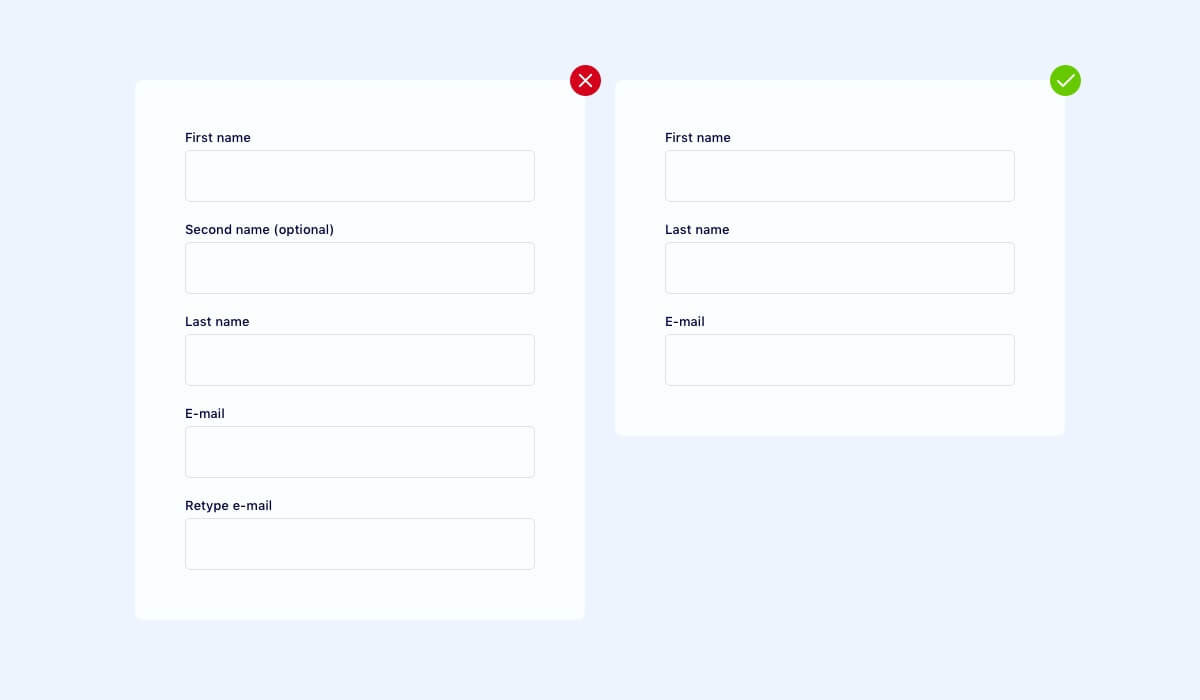Join Osom to know newsletter!
Get your monthly dose of WordPress information.

There are many small details you should consider when designing forms. Take a look at what you should pay attention to in order to create a great one!
When designing forms, one needs to pay attention to many small details. Some of them have to do with our cultural background (we read from left to right, top to bottom) or perception (we find certain colors to be more noticeable than others, which is a remnant of the primitive man’s search for food or seeking out danger).
Remembering these is particularly important in designing forms, where the visuals are serving the purposes of both business and user experience aspects. If the form itself is unintuitive and somewhat against the norms, your users won’t be able to fill it out or they will give up on it altogether. Result → your conversion rate might be low.
Let’s have a look at how a proper project process should look like.
The first order of business is batch data analysis. Are all these fields necessary? You often come across a form with mandatory and optional text boxes. It might lead to a situation where 80% of the form itself isn’t obligatory. Result → extra fields mean additional risk of abandoning the site.

Arrange the fields in a single column layout, so that the eyes descend in a natural, vertical motion. Multiple columns require jumping from one to another, which stretches the time necessary to fill them out – again, that might discourage the user from completing the process and make them abandon the website.
The labels should always be placed on the left side, above its fields – unless of course it is customary for the target market to read from right to left.
If due to the amount of fields it is possible to divide them into groups, do so (personal data, contact information, account details etc.). Within these, a sequence needs to be kept: Name → Last name → Date of birth → Username → Password → Confirm password.

In order to avoid errors when entering atypical information, one might consider adding hints that suggest an appropriate data format (digits, dates). Utilizing tooltips – text suggestions inside or under the fields – can also be a good idea.
Remember to keep your alerts precise and make sure they suggest a solution to the problem, i.e. “Something went wrong!” → “Wrong data format. Use only alphanumeric symbols”.
Implement immediate validation. Sometimes the data confirmation only happens after the form is sent. This is a considerable mistake. Having to fill out an entire form again can be extremely discouraging and often leads to abandoning the website. LIVE validation successfully eliminates this issue.

Make sure that your form is comprehensive and intuitive to fill in. Try out different types of fields and don’t allow the user to feel confused or uncertain about whether they filled the form out correctly (i.e. the date has its own format).
Some of the basic questions can have a limited amount of available answers. If it’s less than 6, you might consider adding a radial button. If it’s a phone number, add an area code input mask. Focus on how you can maximize each field’s efficiency and minimize any doubts the user might face.

The CTA buttons must be properly hierarchized. Distinguish primary actions from secondary ones by using different colors and sizes. Make sure the buttons are well described – they need to signalize where you will be transferred after clicking and what is the form’s overall purpose. If the goal is user registration, then the CTA copy should read “register” or “create account” instead of “send” or “forward”.

We hope this mini-guide points you in the right direction. Remember, less is more – nobody really likes filling out forms,so let’s do our best to simplify the process and achieve the highest possible conversion rates. A good form should always be up to UX/UI standards. It’s a crucial part of the interface and much of the website’s success in the business aspect depends on it. So get going and practice your form design!

Join Osom to know newsletter!
Get your monthly dose of WordPress information.